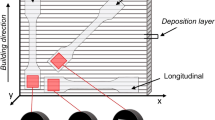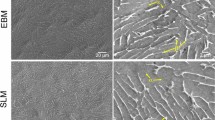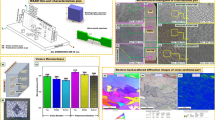Abstract
The effects of the amount and distribution of δ particles on the low cycle fatigue (LCF) properties of alloy 718 wire were investigated. The amount and distribution of δ particles were controlled by cold drawing followed by a variety of agings. As the cold drawing ratio and aging time at 1116K increased, the well developed granular δ particles increased in amount and their distribution at grain/twin boundaries became more uniform. Regardless of the aging conditions, the LCF life increased as the cold drawing ratio increased. The granular particles precipitated along the grain boundary also improved the LCF life of alloy 718 wire since they inhibited crack propagation. After Merrick heat treatment, 50% of the cold drawn wire displayed lower 698K tensile and yield strength than 30% of the cold drawn wire. This was because the higher strain induced by the cold drawing prior to the first aging at 1116K appeared to promote the precipitation of the δ phase during aging, which has no influence on the strength of the material but has same stoichiometry with the γ phase as Ni3Nb and, as a result, the higher strain precipitated a smaller quantity of γ particles with subsequent aging, which is a major hardening phase of the alloy. Cold drawing also lowered the precipitation temperature of the δ phase.
Similar content being viewed by others
References
D. Fournier and A. Pineau,Metall. Trans. A 7, 1095 (1977).
J. M. Oblak, D. S. Duvall and D. F. Paulonis,Metall. Trans. 5, 143 (1974).
W. J. Boesch and H. B. Canada,J. of Metals, Oct., 34 (1969).
W. J. Mills and L. D. Blackburn,Trans. AIME 112, 116 (1990).
B. H. Kear, J. M. Oblak and W. A. Owezarski,J. of Metals 24, 25 (1972).
P. E. Mosser, G. Leconte, J. Leray, A. Lasalmonie and Y. Honnorat,Alloy718-Metallurgy and Application (ed., E. A. Loria), p. 179, TMS (1989).
E. L. Raymond,Trans. Metall Soc. AIME 239, 1415 (1967).
G. Q. Zhang, R. W. Zhang and M. G. Yan,Technical Report for Institute of Aeronautical Materials, p. 5, Beijing, China (1988).
Y. K. Jeong, C. Y. Jo, Y. H. Kim and I. B. Kim,Metals and Materials 3, 224 (1997).
H. F. Merrick,Metall. Trans. A 7, 506 (1976).
R. C.Hall,J. Basic Eng. 89, 511 (1967).
O. Miyagawa, M. Yamamoto and M. Kobayashi,Proc. 3rd. Int’l Symp. on Superalloys (1976).
J. L. Burger, R. R. Biederman and W. H. Couts,Alloy718-Metallurgy and Application (ed., E.A.Loria), p. 207, TMS (1988).
M. Sundararaman, P. Mukhopadhyay and S. Banerjee,Metall. Trans. A 19, 453 (1988).
R. P. Singh,Ph. D Thesis, Drexel University, Philadelphia, PA (1987).
Author information
Authors and Affiliations
Rights and permissions
About this article
Cite this article
Jeong, YK., Jo, CY. & Kim, IB. Effects of δ phase and cold drawing ratio on the LCF properties of alloy 718 wire. Metals and Materials 6, 423–428 (2000). https://doi.org/10.1007/BF03028130
Issue Date:
DOI: https://doi.org/10.1007/BF03028130




